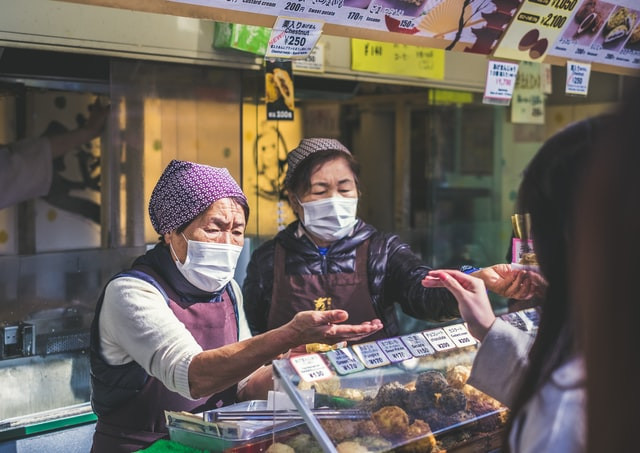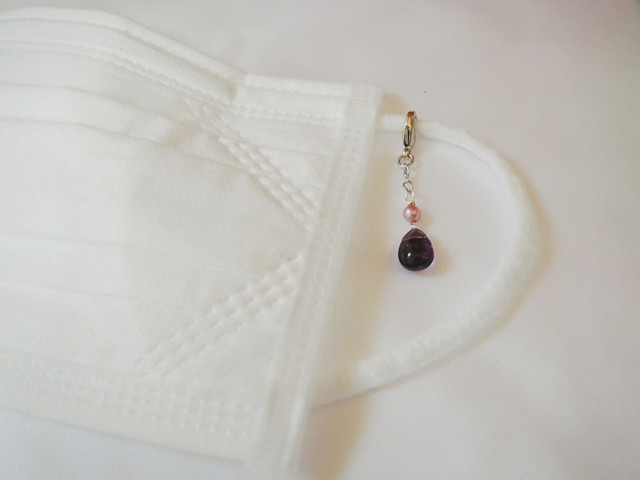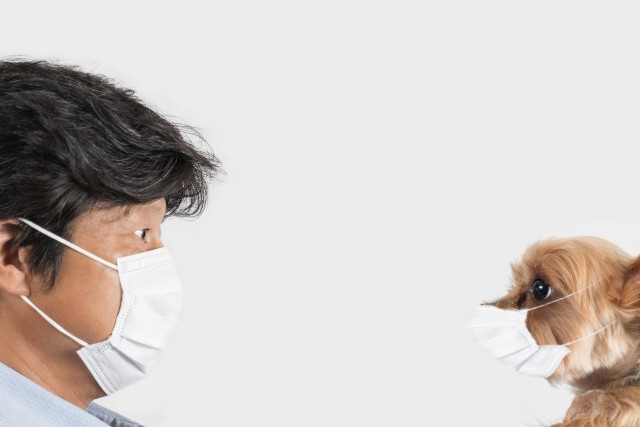Even before the coronavirus struck the world, Japanese people often wore masks - both for sanitary purposes and to comply with the standards of the community. This practice may have helped lessen the devastating effects of the pandemic to an extent besides being just a part of culture and fashion.
Table of Contents
- History of Japan’s Mask-Wearing custom
- Digging Deeper into Japan's Mask Culture
- Where to Buy Masks in Japan
- To Close
History of Japan’s mask-wearing custom
Japan’s culture of wearing masks first started back in 1918 during the onset of the Spanish Flu. Thereafter in 1923, the Great Kanto Earthquake occurred spurring Tokyo residents into donning masks to prevent inhalation of ash and smoke from breakouts of fire. The practice continued to develop in time with subsequent pandemics - the 1934 global influenza pandemic, the 2002-2003 SARS outbreak, and the 2009 H1N1 influenza pandemic.
As unfortunate and catasphrophic as these events have been, it has sparked the innovation of masks to improve the filtration of harmful particles, anti-bacterial and anti-fungal materials, comfort and more in preparation of inevitable pandemics such as that we are facing now.
Masks and COVID-19

Unlike some countries that had trouble acclimating to the “new normal” of wearing masks, most Asian countries have had little to no trouble jumping on board this new trend. This is certainly true for China and Korea whose declining air quality caused by air pollution forced them to gradually adopt the trend as they entered the 21st century.
Indeed this was the same for Japan where wearing masks had already become a part of their culture. The Japanese readily and without protest started wearing masks which has to a certain extent slowed down the spread of COVID-19.
Writer's Pick
Digging Deeper into the Culture
The Japanese’s politeness and code of conduct to “not cause unto others trouble” also played a huge role in developing its mask culture. That’s right, even on regular non-pandemic days, it is not only the norm but a moral expectation for one to don a mask when you are sick with a cough or a case of the sniffles in consideration of not spreading your illness to others. To not do so would induce worried (judging) looks from others and says a lot about your (selfish) character.
Let’s not forget the annual suffering the poor people of Japan have to suffer - HAY FEVER or Kafunshou (花粉症 Pollen Allergy). The biggest allergy season is between February to April caused by pollen from Japanese cedars or Sugi (杉). In fact, it is such a huge deal that the weather forecast has daily coverage on the estimated pollen content in the air. The usage of surgical masks or specialized pollen protection masks are a huge help to hay fever sufferers around the country.
Reasons to Wear a Mask in Japan

Coronavirus
Protection of airborne COVID-19 virus, whether it is from being infected or from infecting others.
Protect Yourself
Winter is the season of flu and influenza, many Japanese choose to wear a mask to prevent catching the disease from someone else. This is called 予防 (yobou - prevention)
Protect Others
As a sign of courtesy, wearing masks will not only protect your own health, but also in consideration of others.
Dry Skin
To protect your skin from strong winds and prevent escape of moisture during dry and windy seasons.
Hay Fever
To prevent the onset of this seasonal allergy, particularly in spring. It stops or reduces inhalation of pollen.
Self-Consciousness
A survey showed that one of the reasons Japanese ladies wear masks is to cover up that they are not wearing makeup. Some people also wear masks when taking public transportation to nap.
Fashion Statement
Due to the unexpectedly long pandemic, masks which have become a part of our daily lives have (naturally) assimilated into the fashion industry with a focus on aesthetics.
Mask as a Protective Fashion

As mentioned above, masks have now transformed into a fashion statement. There is now a new market for mask designers. Trendy masks, sporty masks, lady masks, manly masks, handmade masks, you name it! Here are some of the latest developments and innovations in the mask industry.
Designer Cloths
Other than the standard white and blue of paper filter masks, there are now various designs of textiles whether it is an ordinary checkered pattern, cute character designs, a printing of your own face, an animal face and more. Different types of fabrics are used too such as jeans, t-shirt, felt, and more that can be washed and reused.
Seasonal Masks
Masks designed with the comforts of the seasons in mind; such as Mizuno's Ice Touch Mouth Cover, a mask made of swimsuit material to keep you cool, long cover masks that cover your neck to protect your delicate skin neck from the burning sun, and UV ray cut material masks, all for summer season.
For winter, there are moisture retaining masks to retain humidity and prevent your skin from drying out.
Mask Accessories
Spruce up your mask with accessories including magnet button charms, mask chains or necklaces to hang around your neck so you don’t lose them, around your head straps for a fashionable fitting. Decorated with Swarovski crystals, shining beads, and glittering chains, make wearing a mask a fun task!
Where to Buy Masks

Now that we’ve introduced some of Japan’s developments in fashion masks, we must certainly introduce some places to get them!
Aoki Hifuku
Image Credit: ©青木被服 倉敷本店 (美観地区内)
Located in Okayama Prefecture, also affectionately named the “Holy Land of Denim”, is Aoki Hifuku. Aoki Hifuku started producing masks during the early onset of the coronavirus to help with mask shortage in the country. Their classic design is the denim mask made of Okayama jeans. They also make masks with fabrics such as tweed, wool, velvet, silk, and more.
Mask Wear Tokyo
Located in trendy areas Shibuya and Shinjuku, Mask Wear Tokyo uses quality materials and interesting designs to make wearing a mask a unique experience. I particularly like the black cat design - so cute! Their website has a description for every design that includes an introduction of the mask’s designer, washing instructions, and breakdown of the materials used.
Mask Accessories
If you’re interested in mask accessories, try these shops!
Summary
I hope this article helps you understand mask culture in Japan and perhaps answer the question of how do the Japanese do it so easily. Mask wearing doesn’t have to be uncomfortable or boring, if you’re not liking your mask maybe you haven’t found the right one for you. Browse around for something that fits your taste!















.jpg)



 (2).png)
















